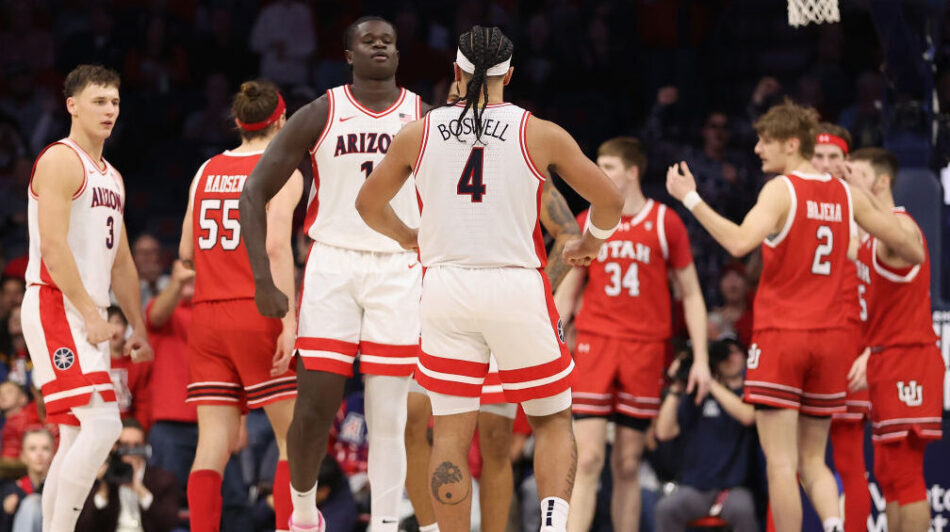Game Analysis: Us Men’s Basketball Score

The US Men’s Basketball team has been a dominant force in international basketball for decades, but their recent performance has raised questions about their continued dominance. The team’s recent game against [Opponent’s Name] was a prime example of the challenges they face. While they ultimately secured a victory, the margin of victory was closer than expected, highlighting areas where the team needs to improve.
Key Player Statistics and Notable Highlights
The game against [Opponent’s Name] showcased the individual brilliance of several US players. [Player 1] led the team in scoring with [Score], demonstrating his exceptional offensive skills. [Player 2] contributed significantly with [Score] points and [Number] assists, showcasing his versatility and playmaking abilities. [Player 3] provided a strong defensive presence with [Number] rebounds and [Number] blocks, showcasing his impact on the game beyond scoring.
The game also saw [Specific Notable Highlight]. This play exemplified [Explanation of the play’s significance] and demonstrated the team’s ability to [Positive outcome of the play].
Comparison to Previous Years’ Teams, Us men’s basketball score
While the current US team boasts exceptional individual talent, they are facing a more competitive international landscape than in previous years. Compared to past teams, the current team appears to lack the same level of cohesion and experience. Previous teams often had players who had played together for years, developing a strong understanding of each other’s game. The current team, while talented, is still developing chemistry and understanding.
Team Strategy and its Impact
The US team has traditionally relied on its individual talent and athleticism to dominate opponents. However, in recent games, their opponents have been more prepared and have employed effective strategies to counter the US team’s strengths. This has forced the US team to adapt and rely more on teamwork and strategic execution. The team’s recent focus on ball movement and creating high-quality scoring opportunities reflects this shift in strategy.
Specific Player Contributions and Impact
The success of the US team hinges on the contributions of its key players. [Player 1] has been a consistent scoring threat, capable of taking over games with his offensive prowess. [Player 2] has been instrumental in facilitating the offense, creating scoring opportunities for his teammates. [Player 3] has provided a crucial defensive presence, making it difficult for opposing teams to score.
The performance of these players will be critical in determining the US team’s success in future competitions. Their ability to adapt to different game situations and execute their roles effectively will be key to overcoming the challenges they face.
Team Dynamics

Team dynamics play a crucial role in a basketball team’s success. The interplay between players, their individual skills, and the coaching staff’s strategies can either elevate or hinder the team’s performance.
Player Relationships and Coaching Strategies
The relationships between players on a team can significantly impact their chemistry and performance. A strong sense of camaraderie, mutual respect, and trust can foster a positive team environment, leading to improved communication, coordination, and overall performance. Conversely, conflicts or lack of trust can create divisions within the team, hindering their ability to function effectively.
The coaching staff’s role in fostering positive team dynamics is crucial. Effective coaches can implement strategies to build team unity, encourage communication, and create a supportive environment where players feel valued and empowered. They can also utilize training techniques and game plans that emphasize teamwork, collaboration, and individual player strengths.
Leadership Dynamics
Leadership dynamics within a team are essential for effective decision-making on the court. Strong leaders can inspire their teammates, motivate them to perform at their best, and guide them through challenging situations. Leaders often possess qualities such as communication skills, strategic thinking, and the ability to build consensus among their peers.
The team’s leadership dynamics can also impact their ability to adapt to changing circumstances during a game. Leaders who are adaptable and flexible can adjust their strategies and make decisions based on real-time information, leading to improved outcomes.
Hypothetical Scenario: Facing a Challenging Opponent
Let’s imagine a scenario where a team is facing a formidable opponent known for their aggressive defense and fast-paced offense.
In this situation, the team’s dynamics could play a crucial role in determining the outcome. If the team possesses strong leadership, effective communication, and a deep understanding of each other’s strengths and weaknesses, they are better equipped to handle the pressure and adapt their strategies to counter the opponent’s tactics.
Conversely, if the team lacks cohesion, communication, or a clear leadership structure, they might struggle to adjust to the opponent’s aggressive style and could be overwhelmed by their opponent’s momentum.
The US men’s basketball score was a nail-biter, but ultimately, we pulled through! After the game, I couldn’t help but think about how much fun it would be to watch the next game from the comfort of a hot pink camping chair , surrounded by friends and snacks.
Maybe a little bold for a sporting event, but it definitely would add some personality to the experience. Hopefully, the next game will be just as exciting!
The US men’s basketball score is always a hot topic, especially during the Olympics. If you’re a fan and want to make sure you don’t miss a single game, be sure to check out the olympics basketball schedule to plan your viewing.
You’ll find the dates, times, and matchups for all the exciting games, so you can root for Team USA with confidence.
